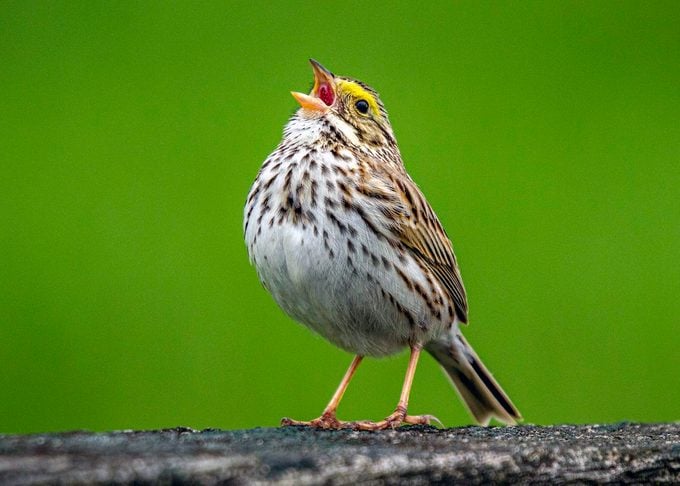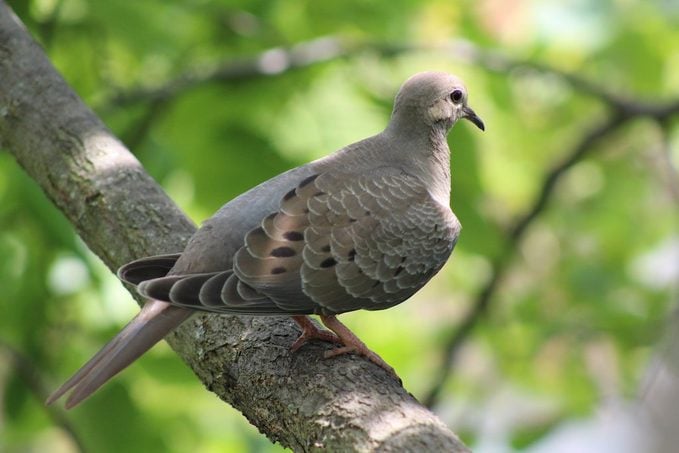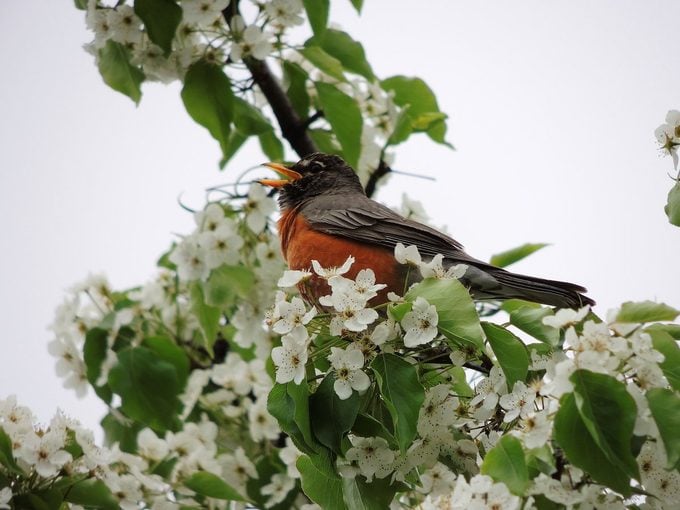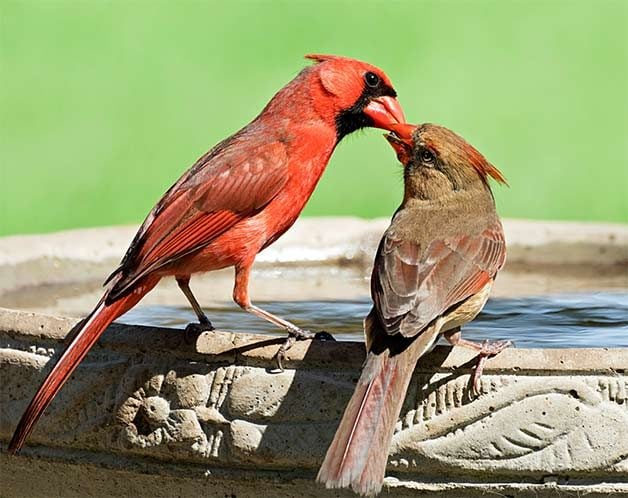Why Do Birds Sing in Spring?
Updated: Apr. 05, 2021
Bird songs are plentiful during the spring, but have you ever wondered why do birds sing? Find out the reasons from a bird expert.

“In the spring, a young man’s fancy lightly turns to thoughts of love,” the saying goes. The same may be said of birds. That’s because spring is when most birds turn to family obligations—they mate, build nests, lay eggs and raise young. Why do birds sing so much during this time, though?
Why Do Birds Sing?
Singing is an important part of the breeding cycle, which begins when migratory male birds reach their nesting grounds. They usually arrive before the female birds, giving each male time to establish a nesting territory and defend it against other males of the same species. Singing is a form of communication that reinforces this ownership—announcing through bird songs that “this is my territory.”
Female songbirds usually arrive on the nesting grounds a week or two after the males. As they pass through, they hear the males singing. If a song attracts them, a female will stop to look over the male, check his plumage to determine if he has desirable genes, and then explore his territory. It is the female that selects a mate.
Learn about the top songbirds in America.

Other Bird Sounds in Spring
Bird songs aren’t always sweet music. Male ring-necked pheasants crow like chickens, mourning doves coo somberly, kingfishers rattle and owls hoot.
Woodpeckers peck on a sounding board, such as the siding of a house. This springtime hammering is not an effort to find food—it’s a communication with other woodpeckers of their kind.
Male ruffed grouse attract mates and defend territories by “drumming,” a booming noise they make by beating the air with their primary wing feathers, usually while perched on a fallen tree or log. Other grouse, like prairie chickens and sage grouse, make a booming sound by filling the air sacs on the sides of their necks with air and exhaling.
Learn more about bird courtship rituals.
Do Male or Female Birds Sing?
Singing usually is a male trait, but some female songbirds croon, too. Female northern cardinals create a softer version of the male cardinal’s song, sometimes in unison with their mates. This likely is a courtship ritual to strengthen the bond between a pair, one more answer to the question, “Why do birds sing?”
Check out sweet photos that show how birds flirt and attract mates.
How Do Birds Sing?
Surprisingly, a bird’s beak or bill sometimes plays little or no part in singing. In fact, birds like warblers and vireos can sing with their bills closed, or with their bills full of food. That’s because birds create the sound deep in their throats by exhaling air from their lungs. However, many birds do belt out tunes in a showy fashion, like the common yellowthroat or eastern meadowlark.
Although we’re not entirely sure how birds learn to sing, we do know it’s a combination of heredity and mimicking. Juvenile songbirds will begin to rehearse their songs during their first autumn and winter. They graduate to mature singing during their first spring. These younger birds will hear other males of their species and imitate them, often adding a slight touch of their own.
Bird Songs vs Calls
There is a big difference between bird songs and their calls. Singing usually is a more melodious sound, while calling often is sharper and more direct. Calls are used either as a loud alarm note to communicate danger, or as quiet chatter to locate mates and other birds of their species. For example, a northern cardinal’s loud “chip” call is very different from its musical “what-cheer, what-cheer, birdie, birdie, birdie” song.

When Do Birds Sing?
The best time to hear birds sing is at dawn on a spring morning. Often called the “dawn chorus,” birdsongs reach a fever pitch at daybreak in late May and early June, the peak of breeding season in most parts of the United States and Canada. It is well worth getting up early to hear nature’s finest musical show. Sometimes it is so loud that the birds drown out each other’s finest efforts. Though most songbirds sing short songs, averaging only 2 to 6 seconds each, a few are known for continuously repeating their song.
Birders have made a sport of counting some amazingly high numbers of repetitive, nonstop songs. One was a male song sparrow in Ohio that performed 2,305 songs nonstop. In Virginia, I heard a whip-poor-will repeat its nighttime chorus at least 800 times before I fell asleep. The world record could be a red-eyed vireo that sang 22,197 times in a single day.
The songs of birds are one of nature’s great gifts. Not only are they a treat to the ear, but bird-watchers who recognize the sounds can easily identify the singer without seeing it.
Next, learn what a Baltimore oriole song sounds like.

